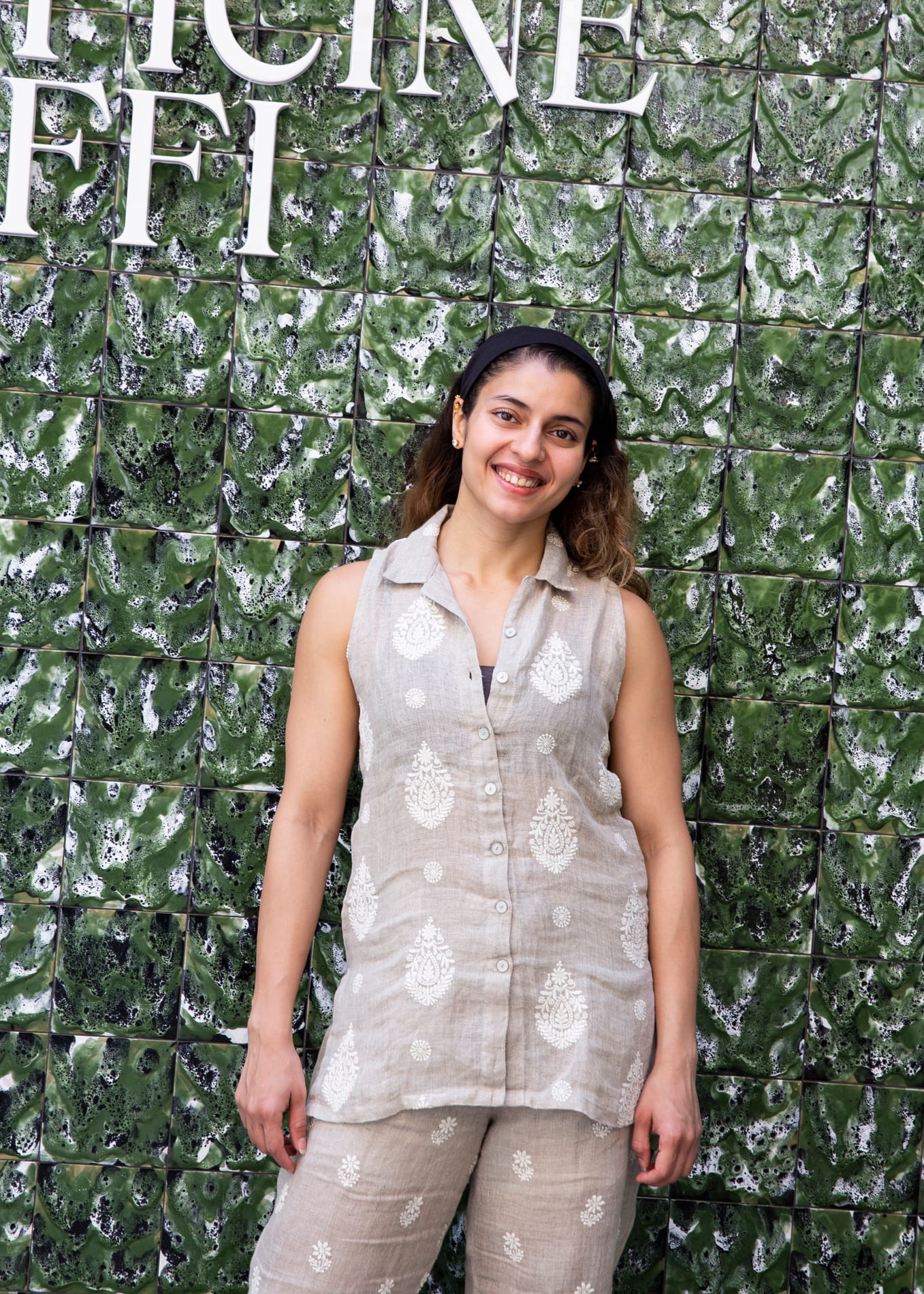For the entire month of July, Vinita Mungi has moved her studio from Mumbai, India, to the Milan headquarters of Officine Saffi, joining the foundation’s artist residency program. In a short interview, she shares her journey—touching on gender advocacy, the technical challenges of developing new glazes, postcolonial feminism, and her connection to the natural world.
What led you to ceramics, and why did you choose to dedicate your work to this medium?
Ceramics has been my passion ever since I took my first ceramics class during my undergraduate studies. The ease I felt with the medium assured me that this was my true calling. Now, several years later, my excitement for ceramics remains just as strong. I love the interplay that clay offers— its endless possibilities during the creation and sculpting phases, as well as the unpredictability of the firing and glazing processes. This contrast is what keeps me captivated by ceramics. Currently, I'm focusing more on glazes and refining my techniques with them, hoping this will mark a new chapter in my practice and enhance my work
What kind of research are you currently conducting here at Fondazione Officine Saffi?
My interest in post-colonial feminism has led me to conduct comparative research between two post-colonial feminist writers: Igiaba Scego (Italy/Somalia) and Anita Desai (India). Scego is an Afro-Italian writer whose work, La mia casa è dove sono, explores Italy’s colonial amnesia, racism, and the search for belonging as a Black woman in Europe. Desai, on the other hand, is an Indian novelist known for Clear Light of Day, which examines the impact of the Partition on Indian families, particularly focusing on how women navigate themes of silence, memory, and sacrifice within domestic spaces.Through this comparative research, I aim to identify common themes related to migration, belonging, memory, and domestic spaces in the contexts of Italy’s forgotten colonialism and India’s Partition. The goal of my research is to create a mid-sized ceramic sculpture resembling tree bark. The visual language will be enhanced through intricate clay details that reflect women’s silenced voices, bodies, and resilience. This will be symbolized by depicting a cracked yet growing tree, representing fragmented identity (Scego) and domestic confinement (Desai). To achieve this, I will work with specially developed and selected glazes. To reference Scego’s La mia casa è dove sono, the color palette will feature cool whites to represent Europe’s “whiteness” and its historical erasure, with deep brown or earthy red underglazes symbolizing the haunting colonial past. Accents of indigo or blue will evoke the ocean as a migration route between Africa and Europe. Conversely, Desai’s Clear Light of Day will be represented through warm terracotta and soft yellow hues to capture the heat of Delhi, while soft matte glazes will reflect fading memories and the passage of time. Subtle cracks in the glaze will symbolize the scars of Partition and the fragility of family ties, emphasizing the emotional weight of shared histories.
What does it mean to be a female artist working with clay in India today?
I believe that now is an exceptional time for female artists in India. I've noticed a shift in perspective that has brought Indian contemporary art to the forefront. A younger generation of artists, gallerists, galleries, and collectors is emerging, making this an exciting time to be a contemporary artist in India. As a female artist, I feel compelled to speak more clearly and passionately about post-colonial feminism. However, I aim to do so in a way that is approachable and non-confrontational. I want to delve into the histories of Indian women who came before me and showcase their stories meaningfully while also connecting my own experiences with theirs.
Where do you get inspiration for your work?
My work draws from my experiences and my interest in post-colonial studies. After graduating from SAIC - School of the Art Institute of Chicago - I knew I wanted to be an artist, and I wanted my work to be relevant to who I am and what I would like to say through my work. Upon first glance, my work resembles nature and various elements in nature. The underlying meaning of the work is normalising gender and sexuality.
Can you recommend three books and three places we should check out, or if you prefer, three songs and three places?
Three books I love are The Ceramic Proces edited by Anton Reijnders which is my go-to resource for understanding various topics and problem-solving; Thinking Women: A Feminist Reader edited by Navaneetha Mokkil and Shefali Jha, a recent source of inspiration for an entire series of works I created; and Yellowface by Rebecca F. Kuang, which was a fun and casual read that also prompted me to reflect on the concept of creative authorship. First of the three places to check out would have to Pirelli Hangar Bicocca, a site for contemporary art exhibitions, located in the Bicocca district of Milan, Italy. I was lucky enough to go there last weekend, and I was in awe of the scale and the vision of the artists creating meaningful site-specific installations. A place I have found comfort in time again is one rooted in nature, and Parco Sempione has been a wonderful place to escape and reflect, or even just have a meal on my own. The last place is going to sound cliche, but it is the Taj Mahal in India. It truly is a marvel of craftsmanship and has always made me feel awestruck.
Fondazione Officine Saffi invites artists, designers, and thinkers to immerse themselves in a residency program that reimagines ceramics craft as a lens for exploring the present. Each year, up to six creative minds from diverse disciplines and cultural horizons are welcomed into this unique program for innovation and collaboration. Residents enjoy full access to state-of-the-art workshops, specialized equipment, and the guidance of our master ceramicists, alongside comfortable accommodations designed to foster focus and inspiration. The program thrives on a culture of equality, participation and open exchange, creating a dynamic ecosystem where ideas flow freely, and collective growth flourishes.
Learn more about the residency program and explore the open call.
Fondazione Culturale Officine Saffi ETS Via Niccolini 35a, 20154 Milan +39 0236685696
|




